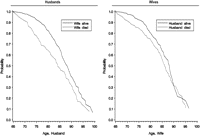Accounting Defination
Tuesday, 22 March 2011
According to partnership act 1932, "the relation between persons who have agreed to share the profits of a business carried on by all or any of them acting for all".
2)Essential of partnership:
The following are the essential elements of partnership:- There must be an agreement entered into by all person concerned.
- The agreement must be to share the profit of a business.
- The business must be carried on by all or any of them acting for all.
3)Partnership agreement:
The agreement among the partners which sets out the terms on which they have agreed to form a partnership is called partnership agreement.4)Rules applicable in the absence of an agreement in partnership:
In the absence of an agreement to the contrary, the following rules are applicable:- The partner shall share equally the profits and losses.
- A partners shall be entitled to interest at the rate of six per cent per annum on the loan advanced by him to the firm.
- A partner is not entitled to any salary for taking part in the conduct of the business.
- No partner is entitled to interest on the capital.
- No interest on drawing is to be charged by the firm.
6)Goodwill:
The benefit and advantage of the good name or reputation of a business. It is the attractive force which brings in customers.7)Average profit method for valuation of goodwill:
According to this method, the average profit of given number of past year multiplied by an agreed number is considered to be the value of goodwill.8)Normal profit:
The normal profits are calculated by multiplying the average capital employed with the rate of general expectation.9)Super profits:
Super profit is the excess of actual profits over normal profits.10)Super profits method for valuation of goodwill:
Under this method super profits is multiplied by an agreed figure to find the value of goodwill.11)Premium method for treatment of goodwill:
- The amount of goodwill is paid privately by the incoming partner to the old partners.
- The value of goodwill attributable to incoming partner's share of profit is brought in cash and the amount is retained in the business.
- The value of goodwill attributable to incoming partner's share of profit is brought in cash and the amount is withdraw by the old partners.
12)Revolution method for treatment of goodwill:
Under this method, the incoming partner does not bring in the amount of goodwill in cash, but a goodwill account is raised in the books at full value.13)Revaluation account:
It is prepaid at the time of admission, retirement or death of a partner for increase or decrease in the value of assets and liability. In the case of revolution account the assets and liability are shown in the new balance sheet at the revalued figures.14)Memorandum revolution account:
It is prepaid at the time of admission, retirement or death of a partner, If the partners agree to keep the book values of assets and liabilities uncharged or unaltered.15)Dissolution of the firm:
According to the partnership act 1932, the dissolution of the partnership between all the partners of a firm is called dissolution of firm.16)Distinction between dissolution of the firm and dissolution of partnership:
The dissolution of partnership does not necessarily involve dissolution of the firm, whereas dissolution of the firm involves dissolution of partnership also.17)Dissolution by agreement:
A firm may be dissolved with the consent of all the partners in accordance with a contract between the partners.0 Comments:
Subscribe to:
Post Comments (Atom)




